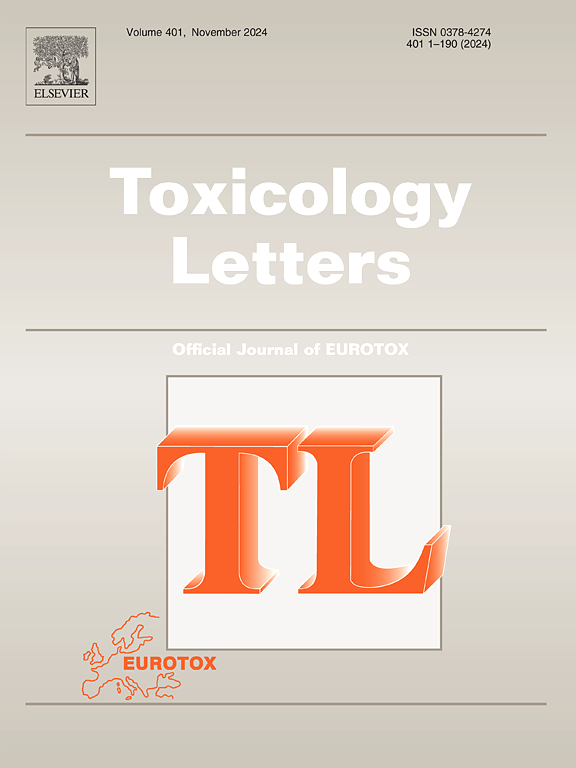Enhanced toxic effects of photoaged microplastics on the trophoblast cells
IF 2.9
3区 医学
Q2 TOXICOLOGY
引用次数: 0
Abstract
Microplastics (MPs) are emerging as a novel pollutant, raising significant concerns regarding their adverse effects on human health. Furthermore, MPs are susceptible to light-induced aging in the environment, which alters their physical characteristics and potentially alters their toxic effects. While previous studies have documented the retention of MPs in the placenta, the specific impacts of MPs, particularly aged MPs, on placental function remain poorly understood. In the current study, we utilized 1 µm polystyrene microplastics (PS-MPs), a widely used model for MPs, to evaluate the effects of photoaged MPs on the placenta. Following oral administration of PS-MPs beginning on embryonic day 3.5 (E3.5), we observed impaired fetal growth and damage to the placental labyrinth chorionic layer in the treated pregnant mice by embryonic day 13.5 (E13.5). The photoaged PS-MPs were generated by exposure to simulated lighting for 7 or 14 days, resulting in alterations to their physical properties. Notably, enhanced cytotoxicity in trophoblast cells was observed for photoaged PS-MPs compared to pristine PS-MPs. Mechanistically, the altered physical properties of PS-MPs, along with elevated lipid peroxidation, may contribute to the increased cytotoxicity of the photoaged MPs. Our findings provide new insights into the detrimental effects and underlying mechanisms of both MPs and, in particular, aged MPs on the placenta and embryonic development. These insights are crucial for assessing the risks posed by MPs to human pregnancy.
光老化微塑料对滋养细胞的毒性作用增强
微塑料(MPs)作为一种新型污染物正在兴起,引起了人们对其对人类健康的不利影响的重大关注。此外,MPs在环境中容易受到光诱导老化,这改变了它们的物理特性,并可能改变它们的毒性作用。虽然以前的研究已经记录了MPs在胎盘中的保留,但MPs的具体影响,特别是衰老的MPs,对胎盘功能的影响仍然知之甚少。在本研究中,我们利用1 µm聚苯乙烯微塑料(PS-MPs)这一广泛使用的MPs模型来评估光老化MPs对胎盘的影响。从胚胎第3.5天(E3.5)开始口服PS-MPs,我们观察到胚胎第13.5天(E13.5)处理的妊娠小鼠的胎儿生长受损和胎盘迷路绒毛膜层损伤。经过照相处理的PS-MPs通过在模拟光照下暴露7天或14天产生,导致其物理特性发生变化。值得注意的是,与原始PS-MPs相比,观察到光老化的PS-MPs对滋养细胞的细胞毒性增强。从机制上讲,PS-MPs物理性质的改变,以及脂质过氧化的升高,可能导致光老化MPs的细胞毒性增加。我们的研究结果为MPs,特别是衰老MPs对胎盘和胚胎发育的有害影响和潜在机制提供了新的见解。这些见解对于评估国会议员对人类怀孕构成的风险至关重要。
本文章由计算机程序翻译,如有差异,请以英文原文为准。
求助全文
约1分钟内获得全文
求助全文
来源期刊

Toxicology letters
医学-毒理学
CiteScore
7.10
自引率
2.90%
发文量
897
审稿时长
33 days
期刊介绍:
An international journal for the rapid publication of novel reports on a range of aspects of toxicology, especially mechanisms of toxicity.
 求助内容:
求助内容: 应助结果提醒方式:
应助结果提醒方式:


